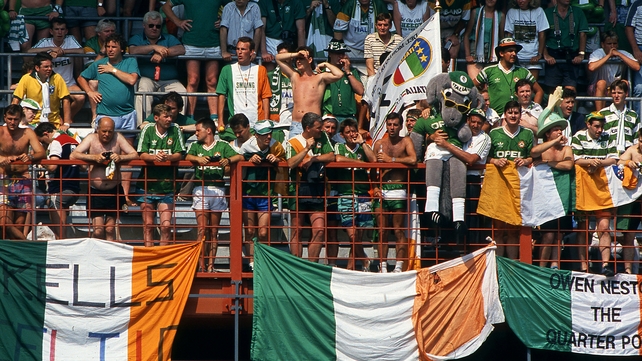18 June 1815: The Battle of Waterloo on this day. This great battle was fought out some 10 kilometres south of the Belgic city of Brussels, along the Ridge of Mont St Jean and on the fields to the south of it. The French Emperor Napoleon Bonaparte was defeated by the combined armies of the Duke of Wellington [above] of the British & Allied Armies and Marshal Blucher leading the forces of Prussia. It was a battle in which men of many nations participated. Men from England, Scotland, Wales, Ireland, the United Provinces (Holland + Belgium), Hanover, Wurttemberg, Prussia and other minor German states fought the forces of France to decide the fate of Europe.
Many soldiers in the British Army were recruited in Ireland though surprisingly few regiments with ‘Irish’ in their title played a part on the day. At least three infantry or cavalry brigades within the Anglo-Allied army of 1815 were led by Anglo Irish generals. Commanding the 9th British Infantry Brigade was Major General Sir Denis Pack, a native of County Kilkenny, Major General Sir William Ponsonby (KIA) led the 2nd British Cavalry Brigade. Major General Sir John Ormsby Vandeleur the 4th British Cavalry Brigade, a light cavalry formation. There were also some five battalion commanders with Irish connections who served in the Waterloo campaign. There were amongst the lower ranks high proportion of men who were either from Ireland or of Irish origin in the ranks.
While the British Army had 10 infantry regiments and 4 cavalry ones with ‘Irish’ in their description only three actually saw service in this campaign: 1st Battalion, 27th (Inniskilling) Foot; 6th (Inniskilling) Dragoons and the 18th (King's Irish) Hussars. They all saw heavy action in actual battle, the 27th in particular taking huge casualties while in Square in the front line.
The British Army who fought that day fielded about 28,000 men drawn from England & Wales, Scotland and Ireland. At that time the Irish (Catholic, Protestant & Dissenter) comprised some 38% of the population of these islands. That ratio was well reflected in the ranks of the military force present at Waterloo with the Irish having a strong presence pretty well across the board in all arms Cavalry, Infantry and Artillery. Most of these were poor men, labourers and weavers who found in the Army a relatively secure measure of employment and shelter.
By all accounts the Irish were good fighters but rightly or wrongly were seen as undisciplined off the battlefield. Many were from Catholic households but the Protestant population were represented as best we can judge in numbers that matched their proportion of the Country’s population too. The rank and file were seen as the ‘scum of the earth’ by Wellington and probably by most of the Officer Class too. In some respects he was right as many were there because they were outcasts and misfits from civil society or rough men who sought a fighting career. But they could fight and fight well - and that's what they were there to do.
When the battle ended that evening some 7,500 men of the British Army laid dead, dying or severely wounded on the battlefield - some 28% of the force engaged. On a per capita basis that would be around 3,000 or so men from Ireland who fell that day - a heavy enough toll. On the other hand the population of the island was some Six Million souls in 1815 so while a severe loss to those that had family in the Military it would not have been seen as a National cause for grief. Indeed many might well have wished for a French Victory that day - Daniel O’Connell being one of them.
There are a number of roads and landmarks in Ireland still that commemorate the battle that day. The most imposing being the Wellington Monument in the Phoenix Park in Dublin that commemorates the Duke of Wellington’s Victories. The halfpenny footbridge over the Liffey in the City Centre is officially ‘Wellington’ bridge and in the suburbs south of the city are the Wellington and Waterloo roads. In Trim Co Meath where his family hailed from there is also a monument to honour him.
But while still a Hero in Britain his legacy in most of Ireland is less sure given his vehement opposition to Catholic emancipation and his eventual sour acceptance of its political necessity. If Waterloo is remembered at all here its for it marking the end of Napoleon Bonaparte’s career rather than any part that Ireland played in his Downfall.

